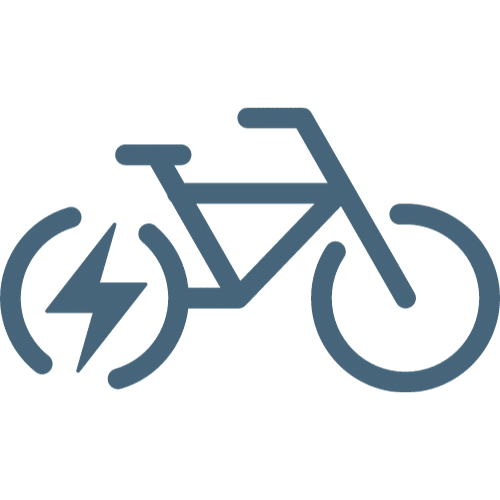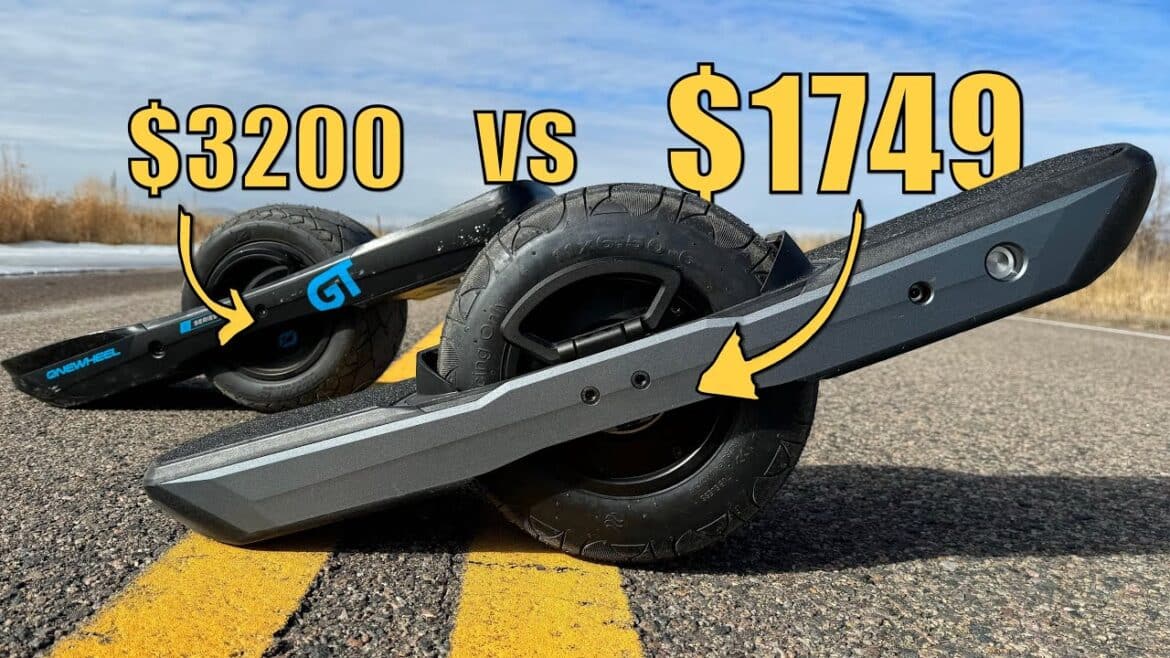The Onewheel is how Jimmy and I met, so it holds a special place on the channel. As soon as I heard of a Onewheel alternative, called the Floatwheel, I knew we had to review it and see if it could compete against the Onewheel. We had tested another Onewheel alternative, the Trotter, in the past and its performance and firmware were underwhelming compared to the Onewheel.
I reached out to Tony at Floatwheel, and he said he would love for us to review it on the channel so we had the ADV Pro shipped to us. It took about a month to arrive and it came in three boxes: One box for the charger, one box for the motor with tire mounted, and one box for the assembled rails with battery, footpads, bumpers, BMS, and controller already installed.
One thing I did not experience was having to purchase it with Bitcoin, so I can’t attest to that experience. (Many people have successfully purchased the Floatwheel with Bitcoin but we do find it odd that you can’t purchase it with any other currency.)
If you are looking for an out-of-the-box ready-to-go product, the Floatwheel is not for you. It took me an hour to assemble my wheel, but for those who take apart their wheels for tire changes, it would most likely only take half an hour. The screw taps were also misaligned a little so I had to be strategic in how I tightened down bolts to make the motor fit securely. After assembly, you will have to also program the wheel using a VESC tool.

The first time I tried to program the ADV Pro, I ran into issues because I didn’t have the correct video on the most current firmware. After receiving the correct video from Tony, it took me an additional half an hour to program the wheel. The VESC tool is complicated at first compared to the Onewheel app, but you have a lot more functions and controls over how the board performs.
In total, you will want to set aside 1.5 to 2 hours to assemble and program your Floatwheel. Another issue we ran into was the plastics for the fenders and bumpers were so brittle that they broke easily. Floatwheel realized the issue and sent us and other customers replacement parts. I commend Tony and Floatwheel for doing the right thing and sending out replacement parts free of charge to customers with defective plastics.

After having initial issues with the assembly, breaking plastics, and having the wrong programming video, I was starting to think the Floatwheel was going to be similar to our lackluster Trotter experience. However, once I had a chance to program the board correctly, I was flabbergasted at how smooth the riding experience was.
The Floatwheel ADV Pro, feels extremely similar to how the Onewheel rides. The footpad engages better than the Onewheel GT and GTS, and you have control of all sorts of different functions with the VESC Tool. The VESC tool app is like the Onewheel app on steroids.
The best things I love about the Floatwheel ADV Pro:
- Tons of torque
- Full control of how the board functions with VESC tool
- Top speeds of 35+ mph
- Rides like a Onewheel
- Board is balanced nicely on ADV Pro with front-mounted battery
- Tire tread is like The Float Life Enduro Tire
- More affordable than the Onewheel GT or GTS
- Right to repair
The Floatwheel ADV Pro allows riders to assume higher risk and reach higher top speeds than the Onewheel GT or GTS. Some riders have reported hitting speeds of 40 mph. It does make it a lot more dangerous for people to crash by increasing the speeds, but it helps tremendously for those who use their Onewheel to commute and race. Previous Onewheels have had issues with the tails slapping when going downhill at higher speeds, and having to slam down on the nose to get the motor to reengage.
With the VESC Tool you can control things you would have never thought to adjust on a Onewheel. The Onewheel app allows you to now do custom shaping, but it still doesn’t compete with the functionality of the VESC tool where you can dial in all sorts of crazy functions.

The tire tread on the Floatwheel has a similar tread to the famous Float Life Enduro Tire, and is made from a nice grippy compound. With the ADV Pro, there is a small front-mounted battery that gives the board a nice balance. I can also adjust the motor height with the rails provided. The best part is Floatwheel is cheaper than the Onewheel GT or GTS, and they allow the right to repair.
I understand why Future Motion doesn’t allow the right to repair due to the liability of people getting injured if the repair work is not done correctly. (Some people beg to differ that it is more about the money aspect of charging for all repairs.) However, I do like that Floatwheel supports the customers and encourages consumers to buy parts if needed.
Things I hate most about the Floatwheel ADV Pro:
- Quality control on screw taps
- Assembly required
- Can only buy with Bitcoin
- Currently pending litigation
- App can be complicated for some to learn
- Can be dangerous if you accidentally put in the wrong settings
Some consumers are not going to take the risk of buying a Floatwheel with Bitcoin because they are not used to purchasing items with crypto currency. If you don’t already have Bitcoin, you will pay a fee to convert your money into Bitcoin. I see this as a huge turn off for a lot of consumers.
I wish that Floatwheel had a little bit better quality control upfront so they don’t have to send out replacement parts that cost the company thousands of dollars. My rails and motor screw holes were not aligned perfectly. I felt like I was going to cross thread the bolts and I would like them to catch that ahead of time. I was able to line them up without cross-threading them, but it should have been a lot more seamless.

The app is very confusing to learn all the functions at first. You will need to take notes and toggle with settings to dial in exactly how you want the Floatwheel to perform. It will take you a few weeks to get comfortable with the app and that could be a turn off compared to the simplicity of the Onewheel app.
If you put in the wrong settings like the cutoff voltage or the calibrating settings, it could lead to a dangerous ride. You will always want to start slow after adjusting settings to ensure that the calibration is done correctly.
Final Thoughts
I commend Floatwheel for creating a product that rivals Future Motion’s Onewheel. The Floatwheel has a lot of positives compared to the Onewheel and I can see budget-friendly consumers leaning towards a Floatwheel. There is just one problem…Onewheel has currently sued Floatwheel on 4 patent infringements and currently the Floatwheel website is down.
There is no way to purchase the Floatwheel, and we are unsure of the current state of the pending litigation. I see the Floatwheel as being a great competitor to help Onewheel keep innovating. (If it survives the lawsuit)
However, I can’t help but feel that it is a little ironic that Onewheel is suing Floatwheel for stealing its design when the Onewheel GT and GTS are a creation of stolen ideas like the rail design and concaved footpad. I understand why Onewheel would be upset at Floatwheel because we don’t like our content being stolen and repurposed, but I also see that these lawsuits could potentially backfire on them by losing support from the community.
Onewheel Comparison Tool
Compare the Floatwheel with all the other Onewheels using our comparison tool here.








